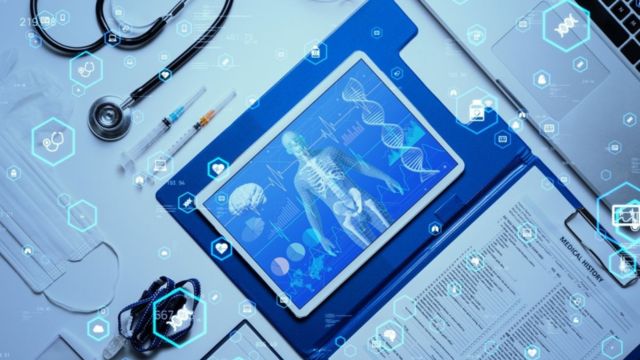Modern healthcare depends much on clinical engineering since it guarantees the safe and efficient operation of medical tools and equipment. Clinical engineering must stay up with technological developments as healthcare changes to better patient outcomes, increase safety, and simplify hospital operations. Driven by innovative technology transforming clinical engineers’ job, 2025 represents an exciting moment in clinical engineering. The most recent innovations changing clinical engineering and their effects on healthcare are discussed in this paper.
1. Artificial Intelligence (AI) and Machine Learning
Predictive maintenance and sophisticated diagnostics made possible by artificial intelligence (AI) and machine learning are transforming clinical engineering Analysing enormous volumes of data produced by medical devices, artificial intelligence systems can find trends and project when equipment is likely to break. By means of proactive maintenance enabled by this predictive capacity, clinical engineers help to minimise downtime and guarantee the continued functionality of important equipment.
Furthermore, by offering real-time insights into device functioning and patient health status, AI-driven diagnostics included into medical equipment help clinical engineers and healthcare providers. Early detection of irregularities made possible by these technology improves patient safety.
2. Internet of Medical Things (IoMT)
The Internet of Medical Things (IoMT) is the network of linked medical equipment sharing data via the internet. By 2025, IoMT will be a pillar technology in clinical engineering, allowing seamless device integration, remote monitoring, and real-time data collecting.
IoMT allows clinical engineers to remotely troubleshoot problems without being physically present, monitor the health of medical equipment constantly, and get alarms regarding failures. This link lowers reaction times and improves healthcare delivery’s efficiency.
3. Augmented Reality (AR) and Virtual Reality (VR)

Clinical engineering is seeing increasing use of augmented reality (AR) and virtual reality (VR) for training, maintenance, and device repair. These immersive technologies give clinical engineers interactive 3D models and simulations of medical equipment, therefore enabling hands-on experience and thorough knowledge of device mechanics.
Directly overlaying repair instructions straight onto tangible objects, AR guides engineers through challenging maintenance jobs methodically. Safe and reasonably priced training sessions made possible by VR environments help to minimise the requirement for actual equipment and downtime during instruction.
4. Blockchain for Medical Device Data Security
Especially considering the growing number of sensitive data produced by medical devices, data security continues to be a major concern in healthcare. Clinical engineering is using blockchain technologies to protect medical device data, therefore guaranteeing integrity, openness, and traceability.
Blockchain guards device maintenance records, calibration logs, and use histories from illegal changes by building a distributed and tamper-proof ledger. This improved security fosters confidence in medical technology and enables hospitals to meet legal criteria.
5. 3D Printing for Custom Medical Device Parts
3D printing is among the technologies that will most revolutionise clinical engineering by 2025. 3D printing lets quick, on-demand production customised to fit particular needs when medical equipment calls for replacement parts or unique components.
By manufacturing spare parts on-site, clinical engineers help to lower equipment downtime and dependency on outside vendors. 3D printing also helps custom implants and prosthesis design and manufacture since quick design and manufacturing of personalised solutions enhances patient outcomes.
6. Advanced Robotics for Equipment Management
The automation of equipment management chores is being driven in great part by robotics. Advanced robotic systems are used by clinical engineers in sterilisation procedures, inventory control, and even sophisticated repairs.
Precision tool-equipped robots can handle delicate or repetitious maintenance tasks, enabling clinical engineers to concentrate on more advanced problem-solving and innovation. Furthermore improving consistency and lowering human mistake in equipment handling are these robotic systems.
7. Cloud Computing and Big Data Analytics
Clinical engineering teams can securely and effectively save, analyse, and access large volumes created by medical devices thanks to cloud computing. Big data analytics’ integration lets one make better decisions depending on thorough understanding of device performance patterns and patient outcomes.
Using cloud platforms allows clinical engineers to easily work across sites, obtain real-time updates, and follow data-driven maintenance plans. In healthcare institutions, this interconnectedness improves responsiveness and resource allocation.
8. Enhanced Telemaintenance Capabilities
In clinical engineering, telemaintenance—also known as remote maintenance—has evolved into a crucial component of processes. High-speed internet and advanced diagnostic tools enable clinical engineers to now remotely do troubleshooting, software upgrades, and calibration.
While preserving high standards of device operation, this lessens the requirement for on-site visits, so saving time and money. Telemaintenance guarantees fair access to professional medical equipment support and aids healthcare facilities in underprivileged or rural places.
Conclusion
The landscape of clinical engineering is rapidly evolving in 2025, powered by innovative technologies that improve the efficiency, safety, and effectiveness of healthcare delivery. Artificial intelligence, IoMT, augmented reality, blockchain, 3D printing, robotics, cloud computing, and telemaintenance are not only transforming the way clinical engineers manage medical devices but also significantly enhancing patient care.
By embracing these advancements, clinical engineering teams are better equipped to meet the growing demands of modern healthcare, ensuring that medical technologies are reliable, secure, and optimized for the best possible outcomes. As these technologies continue to mature, the future of clinical engineering looks promising—one that fosters innovation, collaboration, and improved healthcare worldwide.
Discover high-quality industrial and medical supplies tailored to your needs at J & J Supplies. Whether you’re looking for packaging solutions, safety gear, or medical equipment, we’ve got you covered. Visit us today and experience reliable products with exceptional service!








